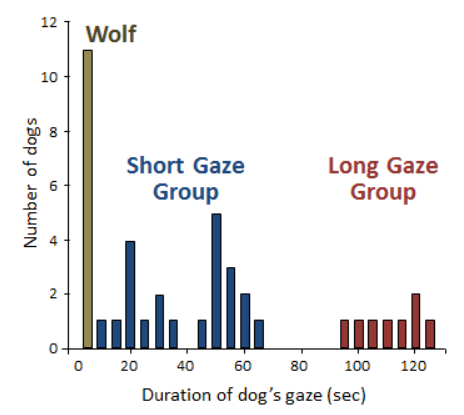The reason why there is a strong bond between dogs and people is clear

by
Dogs and people live in good relationships, but the reason why dogs and people have such a strong connection was revealed in a joint research by Azabu University, Jichi Medical University, and University of Tokyo Health Sciences. I did.
Demonstrating the biological bond between humans and dogs | Azabu University
https://www.azabu-u.ac.jp/topics/2015/0417_2502.html
How your dog uses your hormones against you | The Verge
http://www.theverge.com/2015/4/16/8423449/dog-human-bond-hormone-oxytocin
In general, looking directly at the other person is usually a sign of intimidation in animals, but in the case of humans, staring at each other is a sign of affinity. People who have had dogs have empirically known that their gaze feels as adorable as that of infants. Therefore, the research team hypothesized that 'the dog's line of sight becomes an attachment behavior (loving behavior) like between mother and child, and promotes the secretion of oxytocin , a hormone involved in bond formation in the owner's body,' and conducted an experiment. It was said that.
As an experiment, we asked 30 pairs of dogs from ordinary households and their owners to interact for 30 minutes in the laboratory. Urine was collected before and after the exchange, the concentration of oxytocin was measured, and the behavior was analyzed. After this experiment, we conducted a similar experiment on 11 pairs of wolves and their owners who have lived together since childhood, whether changes in oxytocin due to gaze can be seen in wolves that share the same ancestral species as dogs. I did.

Behavioral analysis revealed that there are groups that stare at the owner (Long Gaze group) and groups that do not stare at the owner (Short Gaze group).

When the oxytocin concentration was measured, the oxytocin concentration increased in the group of dogs that stared closely and their owners, and the oxytocin concentration did not change in the group of dogs that did not stare, both in the dog and the owner. Also, although the contact between the wolf and the owner was the same as the group of dogs that often stared at the owner, the wolf did not often see the owner's face, and the oxytocin concentration was the same for both the wolf and the owner.

In the second experiment, we added two people who met the owner and the dog for the first time, and had a 30-minute exchange in the laboratory. During the 30-minute interaction, the dog is free to move, but restricts the person who meets the owner for the first time from talking to or touching the dog. To confirm the effect of oxytocin, the dog was nasally administered with oxytocin and saline by spraying immediately before the exchange.

Behavioral analysis showed that female dogs receiving oxytocin increased the number of times they stared at their owners.

As a result, the concentration of oxytocin increased only for the owner who interacted with the dog to which oxytocin was administered. There were no changes in other behaviors of female dogs, behaviors of male dogs, or oxytocin levels of their owners.

As a result of the experiment, it was found that the line of sight toward the dog owner promotes the owner's oxytocin secretion as an attachment behavior, and further, the mutual interaction caused by the promotion promotes the dog's oxytocin secretion. In the second experiment, it was also found that administration of oxytocin to clarify the action of oxytocin increased the gaze behavior of the owner and increased the secretion of oxytocin by the owner.

by alessandra luvisotto
Since no dog-like interactions were observed in wolves, it is believed that dogs acquired human-like communication skills and a positive loop of interactions revealed in the study during evolution. increase. In addition, this research is expected to be a clue to the establishment of a human society that shares a living environment with dogs.
Related Posts:
in Science, Posted by darkhorse_log







